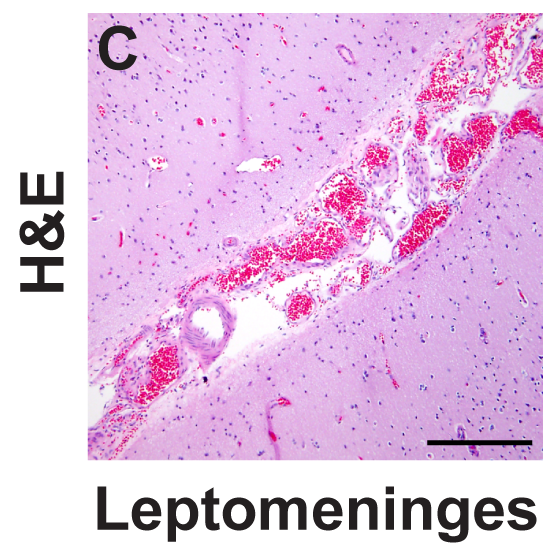Vascular malformations are defects in the architecture and function of arteries, veins, capillaries and lymphatic vessels. The malformations can be familial or sporadic, and are often associated with tissue overgrowth, deformity and infections. We focus on capillary malformations (CM) - excessive and abnormal capillary/venule-like vessels. CMs are often on the face and are referred to in lay terms as port-wine stains. Sturge-Weber syndrome (SWS) is a rare neurological disorder in which CM on the surface of the brain (leptomeninges) (below) are thought to contribute to the neurologic deficits in SWS. SWS patients also often have CM (port-wine stains) on the face and in choroid of the eye.
A somatic, activating mutation in GNAQ (p.R183Q) was discovered in patients with SWS and CM, linking these two disorders. We fractionated CM lesions and SWS brain lesions into specific cell populations and showed the GNAQ (p.R183Q) mutation is enriched in the endothelial cells from skin and brain CMs. Knowing the cellular context in which the GNAQ mutation resides provides essential information needed to decipher the mechanisms by which CMs form, how to prevent CM and how to regress CM.
We have three major goals in this project. The first is to understand how the GNAQmutation in endothelial cells leads to the excessive and abnormal blood vessels. The second is to determine if GNAQ mutant endothelial cells exert paracrine effects on surrounding cells that are deleterious and the third is to create models that reflect the impacts of mutant GNAQ so that we can screen for drugs to treat SWS.
